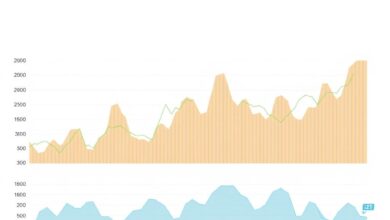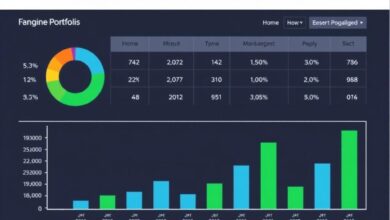How to build an investment strategy that fits your goals

Establish a clear structure to reach your financial ambitions. Begin by defining specific targets that resonate with your long-term vision. Whether it’s saving for retirement, funding education, or acquiring property, pinpointing precise milestones will guide your approach.
Prioritize meticulous planning to align resources with identified objectives. Assess your current financial situation, including assets and liabilities, to determine how much you can allocate toward these targets. Incorporate both short-term and long-term goals into your framework to ensure balanced progress.
Regularly review and adjust your plans based on performance metrics and market conditions. Flexibility within your structure allows you to pivot when necessary, keeping you on track toward achieving desired outcomes while minimizing risks associated with unforeseen changes.
Define Your Financial Objectives
Clearly outline your return expectations and set realistic targets. Distinguish between short-term and long-term aspirations, as each will dictate different approaches to asset allocation and risk management.
For instance, if aiming for a significant purchase like a home in the next five years, consider conservative growth options that ensure capital preservation while still yielding some returns. Conversely, for retirement planning decades away, a higher-risk portfolio might be suitable to maximize growth potential.
Utilize specific metrics to evaluate your goals. Quantify desired outcomes: How much do you need to save annually? What rate of return is necessary to achieve these targets? This quantitative approach aids in constructing a focused roadmap.
Regularly reassess these objectives in response to life changes such as career shifts or market fluctuations. Flexibility ensures that your financial planning remains relevant and effective over time.
Document everything meticulously. Keeping an organized record of your objectives not only clarifies your path but also enhances accountability as you progress toward achieving each milestone.
Assess Your Risk Tolerance
Begin by identifying your comfort level with potential losses. Utilize a risk assessment questionnaire to quantify your capacity to withstand fluctuations in asset values. A score derived from this tool will help you categorize into conservative, moderate, or aggressive profiles.
Consider the time horizon for achieving your financial targets. Longer durations generally allow for more aggressive structures, as you can ride out volatility. Conversely, if your objectives are short-term, prioritize stability and lower-risk assets.
Evaluate external factors affecting your circumstances: job security, income variability, and emergency savings. A stable financial foundation increases the ability to take calculated risks in investments.
Reflect on past experiences with market movements. How did you react during downturns? Emotional responses can provide insights into your tolerance levels and should guide future planning.
Regularly revisit your risk assessment as personal situations evolve–changes in lifestyle or financial responsibilities may necessitate adjustments in your investment structure. Adapting ensures continued alignment with revised targets.
Choose Investment Vehicles
Select appropriate assets to match your financial aspirations and risk appetite. A structured approach facilitates effective planning, ensuring each vehicle contributes to your overall objectives.
- Stocks: Ideal for growth-oriented individuals seeking higher returns. Consider diversification across sectors to mitigate risks.
- Bonds: Suitable for conservative investors looking for stability. Evaluate the credit ratings and yield potential to align with return expectations.
- Mutual Funds: Provide a balanced portfolio managed by professionals. Assess the fund’s performance history and fees before committing.
- Exchange-Traded Funds (ETFs): Offer flexibility and lower expense ratios. Choose ETFs that reflect specific indices or sectors of interest.
- Real Estate: A tangible asset that can generate passive income. Analyze market trends and location dynamics for better investment outcomes.
- Commodities: Diversification tool against inflation. Understand market cycles and price movements in commodities like gold, oil, or agricultural products.
Your selection should reflect a balance between growth potential and risk exposure, tailored to your individual return expectations. Regularly review your choices in light of changing financial landscapes and personal circumstances.
Develop a Diversification Plan
Establish a diverse portfolio that includes various asset classes such as stocks, bonds, real estate, and commodities to mitigate risk while aiming for optimal returns. Aim for a structure where no single investment dominates your holdings, thus spreading exposure across different sectors and geographical regions.
Set clear targets for each asset class based on your financial objectives and return expectations. For example, allocate 60% to equities for growth potential, 30% to fixed income for stability, and 10% to alternatives like real estate or precious metals for inflation protection. Adjust these proportions according to market conditions and personal risk appetite.
Regularly review the performance of each segment in relation to your overall investment framework. Rebalance periodically to maintain desired allocations; this could involve selling high-performing assets and reallocating funds into underperformers, ensuring your portfolio remains aligned with your intended targets.
Incorporate low-correlation investments to further enhance diversification. This approach can reduce volatility and improve risk-adjusted returns over time. Consider including international markets or sector-specific ETFs that respond differently to economic cycles.
Document your diversification plan meticulously, outlining specific assets chosen and the rationale behind each decision. This record will serve as a guide during market fluctuations and help maintain focus on long-term objectives despite short-term volatility.
Monitor and Adjust Strategy
Regularly review performance against return expectations to ensure alignment with planning targets. Set specific intervals for evaluation, such as quarterly or bi-annually, allowing for timely adjustments based on market conditions and personal circumstances.
Utilize financial analytics tools to track the performance of your portfolio. This data will inform decisions about reallocating assets that may be underperforming relative to your anticipated returns. Stay informed about macroeconomic factors that could impact investments, adjusting your approach as needed.
If certain sectors or asset classes consistently exceed or fall short of performance benchmarks, consider rebalancing your holdings. This helps maintain a risk profile consistent with your earlier assessments while ensuring potential growth opportunities are not overlooked.
Engage with a financial advisor periodically to gain insights into market trends and adjust expectations accordingly. Their expertise can highlight shifts in investment vehicles or strategies that align more closely with evolving financial objectives.
Document any changes made to the approach and rationalize these decisions to solidify future planning efforts. Keeping a record allows for reflection on past choices and enhances the decision-making process moving forward.







